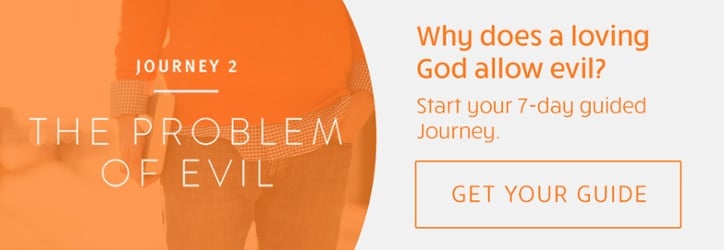.
“Q:Why did Jesus stay around for 40 days after He came back from the grave, instead of going immediately into heaven? This came up in our Bible class the other day and no one seemed to have an answer.
A: One reason Jesus stayed on earth for 40 days after His resurrection instead of ascending immediately into heaven was to demonstrate to His followers that He truly was alive.
After all, they knew the Roman authorities had put Jesus to death, and that His body had been taken down from the cross and sealed in a tomb. And when that happened, they were filled with despair and fear; many even went into hiding. They had believed Jesus was the promised Messiah—and now their hopes were shattered. They had forgotten His promise that He would return from the grave, and they felt they had no future.
But when Jesus appeared among them after the resurrection, their lives were changed. The greatest miracle in all history had just taken place: Jesus Christ was alive! During those 40 days, He appeared to various groups of disciples, proving beyond doubt to them that he had been raised from the dead by the power of God. Over two decades later, the Apostle Paul wrote that “he appeared to more than five hundred of the brothers at the same time, most of whom are still living” (1 Corinthians 15:6).
Another reason, however, why Jesus stayed on earth then was to teach His disciples, and prepare them for the task of telling the world about Christ. Is your faith in the risen Christ, and are you seeking to share His message of salvation with others?” From: https://billygraham.org/answer/why-did-jesus-stay-around-for-40-days-after-he-came-back-from-the-grave-instead-of-going-immediately-into-heaven/
Jesus left His followers with an assignment: “Go therefore and make disciples of all nations” (Matthew 28:19). Wondering if that command is still relevant?
_________
Christ Offered One Sacrifice for Sins Forever
Hebrews 10:12
“But this Man, after He had offered one sacrifice for sins forever, sat down at the right hand of God.
The book of Hebrews shows how the Old Testament sacrificial system was designed to point to the perfect sacrifice of Jesus Christ. The priests of the tribe of Levi were told to regularly offer animal sacrifices. These sacrifices were to remind the people that sin requires the shedding of blood.
Sin offerings of animals, though a costly reminder of sin, did not remove the sins or the death penalty we each earn by sin. Hebrews 10:4 explains, “For it is not possible that the blood of bulls and goats could take away sins.” The animal sacrifices were a symbol of the true sacrifice—Jesus Christ.
As the Son of God and Creator, Jesus Christ’s life is worth far more than the lives of all humans who will ever live. His one death more than paid the death penalty for all who will repent and seek forgiveness.
For more about the perfect sacrifice of Jesus Christ and what our response should be to it, see “What Is Repentance?”
Listen to the "Verse by Verse" episode covering this scripture at: https://lifehopeandtruth.com/bible/blog/christ-offered-one-sacrifice-for-sins-forever/?

________
Cancer-Causing NDMA in Medications (Zantac, Metformin) and Meat
Transcript of video at: https://nutritionfacts.org/video/cancer-causing-ndma-in-medications-zantac-metformin-and-meat/
Below is an approximation of this video’s audio content. To see any graphs, charts, graphics, images, and quotes to which Dr. Greger may be referring, watch the above video.
“Billion-dollar drugs pulled from the market for carcinogenic contamination less than that found in a single serving of grilled chicken.
In 2018, one of the bestselling blood pressure drugs, valsartan—sold as Diovan—was found to be contaminated by the “probably carcinogenic” nitrosamine known as N-nitrosodimethylamine (NDMA). It’s believed that approximately 20 million people worldwide were prescribed the drug tainted with this contaminant whose cancer risk has been shown to exceed that of many known potent carcinogens, including asbestos, benzo[a]pyrene, and PCBs.
The U.S. Food and Drug Administration (FDA) estimated that taking the drug for a few years could cause cancer in as many as 1 in 8,000 people, whereas the European equivalent of the FDA estimated the cancer risk could be as high as 1 in 5,000. It is unlikely, researchers wrote in this Spring 2019 paper, that drugs like valsartan are a unique case. And indeed, a few months later, the FDA announced it had found NDMA in ranitidine.
Ranitidine, the acid reflux drug sold as Zantac, is one of the most prescribed drugs on the planet, in addition to being sold over the counter. Give people a single tablet and the amount of NDMA flowing through their bodies jumps up more than a hundred-fold.
Then in 2020, some formulations of metformin, a popular diabetes drug sold as Glucophage, were found to be contaminated. The finding of NDMA in common medicines led the FDA to call for the immediate withdrawal of all Zantac from store shelves, yanking the drug from the market because their testing showed NDMA levels could in some circumstances exceed the acceptable daily intake limit of 96 nanograms per day. It was so bad that the FDA found levels of this carcinogenic contaminant NDMA in Zantac similar to the levels you would expect to be exposed to if you ate grilled or smoked meats!
Wait, what?
NDMA has not only been found in contaminating drugs. It is a known byproduct from pesticide manufacturing, leather tanning, and tire plants, and is found in multiple foods and beverages, including processed meat and beer. Now that we know NDMA can transfer through the placenta, this may explain the relationship between maternal cured meat consumption during pregnancy and the risk of childhood brain tumors. For example, hot dog consumption during pregnancy may increase childhood brain tumor risk by 33 percent or sausage consumption may increase it by 44 percent. Bacon consumption may increase childhood brain tumor odds by 60 or 70 percent. But it’s not just processed meat. Researchers have found it in poultry products as well.
A single serving of chicken contains more than 100 nanograms of NDMA. Remember how the FDA said the acceptable daily intake limit is 96 nanograms per day? Half of a chicken breast contains 110.
Now, raw poultry doesn’t have any; it’s the cooking process. In fact, the dry-heat cooking of meat, like broiling or grilling, even creates airborne NDMA, releasing this very potent carcinogenic compound into the air. So, even if you’re only getting a salad or something in a charcoal grill restaurant, just being indoors where meat is being cooked could pose a significant cancer risk.
These nitrosamines are also found in cigarette smoke, and pressure was put on the tobacco industry to try to remove them, arguing that there is simply no logical reason why a removable carcinogen should be allowed to remain in a consumer product. That’s the same reason Zantac was yanked from store shelves.
Okay, so let me get this straight.
One of the best-selling drugs in history was pulled from the market—a drug that brought in billions of dollars—because it contained a probable carcinogen that exceeded the acceptable daily limit, but there may be more of the contaminant in a single serving of chicken! So, my question is: why aren’t they pulling the poultry off the shelves as well?” From: https://nutritionfacts.org/video/cancer-causing-ndma-in-medications-zantac-metformin-and-meat/
________
















No comments:
Post a Comment